
AZ-700: Designing and Implementing Microsoft Azure Networking Solutions
PDFs and exam guides are not so efficient, right? Prepare for your Microsoft examination with our training course. The AZ-700 course contains a complete batch of videos that will provide you with profound and thorough knowledge related to Microsoft certification exam. Pass the Microsoft AZ-700 test with flying colors.

Curriculum for AZ-700 Certification Video Course
| Name of Video | Time |
|---|---|
 1. Introduction to Networking |
7:00 |
 2. Virtual Networks and Subnets |
4:00 |
 3. DEMO: Create an Azure Virtual Network |
8:00 |
 4. DEMO: Azure Virtual Network Security Tab |
4:00 |
| Name of Video | Time |
|---|---|
 1. Introduction to Site-to-Site VPNs |
5:00 |
 2. Virtual Network Gateway SKUs |
7:00 |
 3. Local Network Gateway |
4:00 |
| Name of Video | Time |
|---|---|
 1. Introduction to Point-to-Site VPNs |
10:00 |
 2. Tunnels and Authentication Types |
4:00 |
| Name of Video | Time |
|---|---|
 1. Introduction to ExpressRoute |
6:00 |
 2. DEMO: Create an ExpressRoute Gateway |
5:00 |
| Name of Video | Time |
|---|---|
 1. Core Networking Overview |
5:00 |
 2. Create and Delete Subnets |
3:00 |
 3. Add Resource to Subnet |
4:00 |
 4. Security for Resources on the Same Subnet |
4:00 |
 5. Security for Resources on Different Subnets |
2:00 |
 6. Planning Subnets |
4:00 |
| Name of Video | Time |
|---|---|
 1. Overview of Public DNS Zones |
3:00 |
 2. Create and Use a Public DNS Zone |
8:00 |
 3. Create and Use a Private DNS Zone |
6:00 |
| Name of Video | Time |
|---|---|
 1. VNet Peering Concepts |
5:00 |
 2. Demo: Create a Peering Relationship Between Two Networks |
4:00 |
| Name of Video | Time |
|---|---|
 1. Overview of Virtual WAN |
6:00 |
 2. Virtual WAN Hub Demo |
5:00 |
| Name of Video | Time |
|---|---|
 1. Overview of Azure Routing |
3:00 |
 2. Route Tables and Custom Routes |
8:00 |
 3. Forced Tunneling in PowerShell |
8:00 |
 4. Create a S2S VPN in PowerShell |
2:00 |
 5. Set Network Gateway Default Site |
4:00 |
| Name of Video | Time |
|---|---|
 1. Overview of Azure Load Balancing Solutions |
7:00 |
 2. Choosing the Right Load Balancing Solution |
4:00 |
 3. Overview of Azure Load Balancer Service |
4:00 |
 4. Create a Load Balancer DEMO |
11:00 |
 5. Testing a Load Balancer |
4:00 |
| Name of Video | Time |
|---|---|
 1. Create an Application Gateway DEMO |
8:00 |
 2. Test the Application Gateway |
2:00 |
 3. Rewrite HTTP Headers |
5:00 |
 4. Application Gateway Scaling |
4:00 |
| Name of Video | Time |
|---|---|
 1. Create a Front Door DEMO |
7:00 |
 2. Test the Front Door |
4:00 |
| Name of Video | Time |
|---|---|
 1. Create a Traffic Manager DEMO |
3:00 |
 2. Test the Traffic Manager |
3:00 |
| Name of Video | Time |
|---|---|
 1. Create a Virtual NAT |
6:00 |
| Name of Video | Time |
|---|---|
 1. Overview of Azure Firewall |
2:00 |
 2. Create an Azure Firewall |
3:00 |
 3. Setup an Azure Firewall Policy |
6:00 |
 4. Test an Azure Firewall |
7:00 |
 5. Overview of Azure Firewall Manager |
3:00 |
| Name of Video | Time |
|---|---|
 1. Overview of Network Security Groups (NSGs) |
5:00 |
 2. Assign Custom Inbound and Outbound Rules |
6:00 |
 3. Associate an NSG with a Subnet or a NIC |
4:00 |
 4. Create an Application Security Group (ASG) |
4:00 |
| Name of Video | Time |
|---|---|
 1. Overview of Web Application Firewalls (WAF) |
2:00 |
 2. WAF Policies |
4:00 |
 3. Test WAF Custom Policies |
2:00 |
| Name of Video | Time |
|---|---|
 1. Overview of Monitoring Networks |
4:00 |
 2. Enable Network Diagnostics |
7:00 |
 3. Connection Monitor |
6:00 |
 4. Testing a Connection Between Endpoints |
3:00 |
 5. Traffic Analytics |
6:00 |
| Name of Video | Time |
|---|---|
 1. Azure Private Link Service Overview |
2:00 |
 2. Create Standard Load Balancer |
5:00 |
 3. Create Azure Private Link and Private Endpoint |
6:00 |
 4. Test Azure Private Link Service |
2:00 |
Microsoft AZ-700 Exam Dumps, Practice Test Questions
100% Latest & Updated Microsoft AZ-700 Practice Test Questions, Exam Dumps & Verified Answers!
30 Days Free Updates, Instant Download!
AZ-700 Premium Bundle

- Premium File: 369 Questions & Answers. Last update: Dec 13, 2025
- Training Course: 64 Video Lectures
- Study Guide: 762 Pages
- Latest Questions
- 100% Accurate Answers
- Fast Exam Updates
Microsoft AZ-700 Training Course
Want verified and proven knowledge for Designing and Implementing Microsoft Azure Networking Solutions? Believe it's easy when you have ExamSnap's Designing and Implementing Microsoft Azure Networking Solutions certification video training course by your side which along with our Microsoft AZ-700 Exam Dumps & Practice Test questions provide a complete solution to pass your exam Read More.
Microsoft AZ-700 Certification Training: Master Azure Networking Solutions
Microsoft Azure AZ-700 Training Program: Networking Solutions Study Course
Course Overview
The Microsoft AZ-700 certification, officially known as Designing and Implementing Microsoft Azure Networking Solutions, is one of the most sought-after specializations in the field of cloud networking today. With enterprises increasingly moving critical workloads and services to Microsoft Azure, networking professionals are expected to build secure, scalable, and high-performance infrastructures that can support hybrid and cloud-native applications. The AZ-700 exam validates these skills and establishes professionals as Azure Network Engineer Associates.
This course has been carefully designed to guide learners from foundational knowledge of Azure networking all the way through advanced enterprise-grade design principles. Participants are introduced to the fundamental building blocks of networking in the cloud, such as virtual networks, hybrid connectivity, routing, load balancing, and network security, while also learning how to monitor and troubleshoot solutions in real-world environments.
The aim of this course is not only to prepare candidates for the certification exam but also to help them gain the ability to confidently design, implement, and manage Azure networking solutions in professional contexts. It integrates study resources, practical labs, and scenario-based exercises, ensuring that the skills acquired go beyond theoretical knowledge.
By completing this course, learners will be positioned to take advantage of the growing demand for Azure networking expertise, whether they are looking to advance within their current role, transition into a specialized networking career, or contribute more effectively to their organization’s digital transformation journey.
What You Will Learn From This Course
Design and implement hybrid networking solutions connecting on-premises environments to Azure using VPN Gateway and ExpressRoute.
Configure and manage Azure Virtual Networks, subnets, and IP addressing for enterprise environments.
Implement secure access to Azure services using Private Link, service endpoints, and network security groups.
Apply routing strategies, including user-defined routes, to control traffic flow within Azure networks.
Implement and configure load-balancing solutions such as Azure Load Balancer, Application Gateway, and Traffic Manager for high availability.
Deploy and manage security services including Azure Firewall and DDoS Protection.
Monitor and troubleshoot network performance with tools like Azure Network Watcher.
Optimize networking for enterprise applications and ensure compliance with security and governance requirements.
Develop the skills to approach real-world scenarios with hands-on labs and case-based exercises.
Prepare thoroughly for the AZ-700 exam with structured modules, practice assessments, and study guides.
Learning Objectives
The course has been structured around well-defined learning objectives that align with the competencies required for the AZ-700 certification exam. Upon completion, participants should be able to:
Understand the role of Azure networking in modern cloud architectures and how it enables hybrid and multi-cloud strategies.
Design networking solutions that integrate on-premises data centers with Azure resources in a secure and reliable manner.
Implement routing, load balancing, and security configurations that support high availability and scalability.
Use private access and isolation techniques to protect sensitive applications and data hosted in Azure.
Monitor, analyze, and optimize network performance using Azure’s built-in tools.
Apply best practices for cost optimization, governance, and compliance in networking designs.
Approach the AZ-700 exam with confidence by having mastered both conceptual understanding and practical implementation.
These objectives ensure that learners not only pass the certification exam but also gain the practical expertise required to contribute meaningfully to professional projects.
Requirements
Before starting this training program, learners should have access to the following:
A Microsoft Azure subscription, either free or paid, to practice deploying networking resources in real time.
A reliable internet connection for accessing course material, video sessions, and labs.
A laptop or workstation capable of running Azure portal operations and virtual labs.
Willingness to dedicate consistent study time and engage actively with hands-on exercises.
Basic knowledge of networking and cloud computing fundamentals to better understand advanced concepts.
These requirements ensure that learners are equipped with the necessary tools and mindset to succeed throughout the course.
Course Description
The AZ-700 course is structured as a comprehensive training program that addresses both the theoretical and practical dimensions of Azure networking. It begins with an introduction to the core principles of networking in Azure, focusing on virtual networks, subnets, and addressing schemes. From there, learners move on to advanced topics such as hybrid connectivity through VPN Gateways and ExpressRoute, which enable organizations to seamlessly integrate on-premises infrastructure with the cloud.
Routing and load balancing represent a central focus of the course, as these capabilities are essential to ensuring that traffic within Azure environments flows securely and efficiently. Participants learn how to configure Azure Load Balancer, Application Gateway, and Traffic Manager, as well as how to implement user-defined routing to achieve custom network topologies.
Security is a recurring theme throughout the course. Learners explore the configuration of firewalls, DDoS protection, and role-based access controls that safeguard resources against internal and external threats. The training also introduces best practices for designing private access to services using Private Link and service endpoints, a critical feature for protecting sensitive workloads.
Another important aspect of the course is monitoring and troubleshooting. Using Azure Network Watcher and related tools, participants gain the ability to analyze traffic patterns, diagnose issues, and ensure that their networking solutions perform as expected. Real-world labs complement the theoretical modules, allowing learners to put knowledge into action and troubleshoot simulated issues.
The course concludes with dedicated exam preparation sessions that guide participants through the structure of the AZ-700 exam, practice questions, and strategies for success. By combining hands-on training with exam readiness, this course provides a holistic approach to both certification and professional development.
Target Audience
The AZ-700 training program has been designed for a diverse audience of professionals seeking to develop or validate their Azure networking expertise. Typical participants include:
Network engineers looking to expand their skills into cloud networking with Azure.
IT professionals who are responsible for designing and implementing hybrid networking solutions.
Azure administrators and architects who need to integrate networking strategies into their solutions.
Security professionals aiming to understand and implement secure networking practices within Azure.
Cloud engineers preparing for the Microsoft Certified: Azure Network Engineer Associate credential.
Professionals seeking to transition from on-premises networking roles into cloud-based networking positions.
Teams within organizations undergoing digital transformation who need to ensure strong networking foundations in their Azure deployments.
This wide applicability makes the AZ-700 training course a valuable investment for individuals and organizations alike.
Prerequisites
To make the most of this course, participants are encouraged to have some prior knowledge and experience before enrolling. The recommended prerequisites include:
A fundamental understanding of networking concepts such as IP addressing, DNS, routing, and security protocols.
Basic knowledge of Microsoft Azure services, preferably through completing introductory certifications like Azure Fundamentals (AZ-900).
Experience with network configuration in on-premises or hybrid environments, though this is not mandatory.
Familiarity with basic security principles, including firewalls, access control, and encryption.
Comfort navigating the Azure portal and using the command-line interface or PowerShell for administrative tasks.
These prerequisites are designed to help learners engage with the content more effectively and build on an existing foundation of knowledge. However, the course is structured to support learners with varying levels of expertise, and the combination of theory and practice ensures accessibility for motivated participants.
The Growing Value of Azure Networking Expertise
The demand for professionals with Azure networking skills continues to rise as organizations adopt hybrid and multi-cloud strategies. Networking lies at the core of these transformations, ensuring secure and reliable communication between applications, users, and services. The AZ-700 certification has emerged as a trusted way to validate these skills, giving certified professionals a competitive edge in the job market.
Cloud adoption has created new challenges around connectivity, scalability, and security. Enterprises now require solutions that can integrate on-premises data centers with public cloud services, enable secure remote access for employees, and provide reliable global connectivity for distributed applications. This course provides the knowledge and skills necessary to meet those demands and to design networking solutions that deliver long-term value.
The Microsoft Certified: Azure Network Engineer Associate credential, earned by passing the AZ-700 exam, is recognized globally and demonstrates the ability to solve complex networking challenges in Azure environments. For professionals seeking to specialize in cloud networking or advance in their careers, this certification serves as both a milestone and a stepping stone toward further expertise in Azure solutions.
Course Modules/Sections
The AZ-700 course on designing and implementing Microsoft Azure networking solutions has been carefully structured into multiple modules, each of which builds on the previous one. This modular approach ensures that learners gain both foundational and advanced knowledge in a progressive manner.
The first module introduces learners to the basics of Azure networking infrastructure. It focuses on the design and configuration of virtual networks, subnets, IP addressing, and network security groups. Learners are provided with practical exercises to configure networks from scratch and understand how they operate in a cloud environment.
The second module dives into hybrid networking solutions. This is where learners discover how to connect on-premises environments to Azure using site-to-site VPNs, point-to-site VPNs, and ExpressRoute. Hybrid networking is a cornerstone of many enterprise architectures, and this section ensures learners are comfortable designing resilient connections that meet business needs.
The third module focuses on routing and load balancing. Students learn about user-defined routes, system routes, and how traffic can be controlled within a virtual network. They also gain an understanding of Azure’s load-balancing options, including Azure Load Balancer, Application Gateway, and Traffic Manager. Each load balancer is explored in depth, with scenarios that show when to use each solution.
The fourth module is dedicated to security. It explores advanced topics such as Azure Firewall, DDoS Protection, private access to Azure services, and secure application delivery. Learners build practical experience by configuring firewalls, testing DDoS resilience, and applying private links to sensitive applications.
The fifth module covers monitoring and troubleshooting. Students are introduced to Azure Network Watcher and related tools for analyzing network traffic, diagnosing connectivity problems, and improving performance. By the end of this module, learners are equipped with the skills to proactively monitor and respond to networking issues.
The final module integrates all prior knowledge into exam preparation and real-world scenarios. Learners work through practice questions and lab environments that simulate real Azure networks. This capstone ensures readiness for both the certification exam and practical projects.
Key Topics Covered
This part of the course places emphasis on core infrastructure topics that every Azure network engineer must master. The key areas include:
Design and deployment of virtual networks, including subnets, IP ranges, and address spaces that support enterprise workloads.
Implementation of hybrid networking using VPN gateways and ExpressRoute circuits to enable secure communication between on-premises data centers and Azure.
Configuration of routing mechanisms, both system-provided and custom user-defined routes, to optimize traffic flows in complex environments.
Design of load-balancing strategies with Azure Load Balancer for basic network traffic distribution, Application Gateway for advanced application-level routing, and Traffic Manager for global load distribution across regions.
Implementation of security controls using network security groups, Azure Firewall, and DDoS Protection to safeguard cloud resources.
Establishing private access to Azure services with Private Link and service endpoints to ensure sensitive workloads are isolated from the public internet.
Monitoring, analysis, and troubleshooting of Azure networking solutions with Azure Network Watcher, connection monitors, and diagnostic logs.
Integration of networking best practices into hybrid and enterprise-level architectures for scalability, governance, and compliance.
These topics not only prepare learners for the AZ-700 exam but also develop the ability to design networking architectures that address real-world business challenges.
Teaching Methodology
The teaching methodology of this course has been designed to provide a blend of theoretical knowledge and practical application. Rather than focusing solely on memorization of concepts, the training is centered on experiential learning. Each module begins with a structured lecture that introduces the topic, its purpose, and its application in Azure. These lectures are delivered in a way that connects abstract networking concepts to practical business scenarios, ensuring learners understand why certain configurations are used.
Following the theoretical explanations, learners engage with guided demonstrations where instructors walk through the Azure portal to deploy networking solutions step by step. This visual and interactive component allows participants to connect the theory with the actual environment they will use in professional settings.
Hands-on labs are a critical aspect of the methodology. Students are provided with scenarios that mirror real-world challenges, such as connecting branch offices to Azure, securing applications from distributed denial-of-service attacks, or optimizing network routing for multi-region deployments. These labs are designed to reinforce knowledge by applying it directly, which strengthens retention and prepares learners for both the exam and practical job roles.
Additionally, the methodology emphasizes collaborative learning through group discussions, Q&A sessions, and peer-to-peer support. This fosters a community environment where learners can share their experiences, clarify doubts, and approach challenges together. The balance of lecture, demonstration, and practice ensures a comprehensive learning experience that appeals to different learning styles.
Assessment & Evaluation
Assessment within this course is designed to measure both knowledge acquisition and practical application. Traditional quizzes and practice tests are used at the end of each module to ensure that learners have absorbed the theoretical aspects of Azure networking. These assessments mimic the style of the AZ-700 exam, featuring multiple-choice questions, case studies, and scenario-based queries.
Beyond quizzes, learners are evaluated through lab-based exercises that simulate real-world scenarios. For instance, they may be asked to configure a hybrid connection between an on-premises environment and Azure, implement a firewall to protect workloads, or set up a load balancer for high availability. Performance in these labs is used as a benchmark for readiness, since hands-on ability is a critical skill for network engineers.
Periodic assessments also include peer reviews, where learners can evaluate one another’s lab configurations. This collaborative evaluation helps participants understand alternative approaches to the same problem, broadening their perspective.
Finally, a comprehensive mock exam is offered toward the end of the course. This final assessment integrates questions from all domains of the AZ-700 exam and simulates the actual testing environment. By completing this evaluation, learners gain insight into their strengths and weaknesses, allowing them to focus their study efforts more effectively. The combination of theoretical and practical assessments ensures that learners are not only exam-ready but also capable of applying their skills in real professional environments.
The Role of Core Networking Infrastructure in Azure
Understanding and mastering the core networking infrastructure of Azure is fundamental to success in this certification. Virtual networks are the backbone of Azure deployments, providing the foundation for secure communication between resources. By segmenting workloads into subnets and controlling access through network security groups, organizations can maintain both efficiency and security in their operations.
Hybrid networking extends this foundation by allowing seamless connectivity between cloud and on-premises resources. Businesses rarely abandon their data centers overnight, and hybrid solutions provide the bridge that supports gradual cloud adoption while maintaining critical legacy systems. Configuring VPN Gateways and ExpressRoute circuits becomes a crucial skill, as these solutions must ensure reliability, encryption, and high throughput.
Routing and load balancing determine how efficiently traffic flows through a network. Engineers who can optimize routing reduce latency and improve user experiences, while load balancing solutions guarantee availability even during traffic spikes. The diversity of Azure’s load-balancing offerings ensures that engineers can design solutions tailored to specific application needs, whether at the network, application, or global level.
Security is layered across all aspects of infrastructure. Network security groups enforce rules at the subnet or network interface level, Azure Firewall provides advanced traffic filtering, and DDoS Protection guards against large-scale attacks. Together, these features create resilient defenses against evolving threats.
Monitoring tools like Network Watcher give engineers visibility into the health and performance of networks. Proactive monitoring ensures that potential problems are identified and resolved before they impact users. These tools also support optimization, as data gathered from monitoring can inform better architecture designs in the future.
By mastering these components, learners gain the ability to design Azure networks that are not only functional but also secure, scalable, and optimized for performance. This expertise is highly valued in professional environments, where networking lies at the heart of cloud transformation projects.
Benefits of the Course
One of the key benefits of taking the AZ-700 course is the structured pathway it provides to mastering Azure networking in a practical, hands-on manner. For professionals who already have some exposure to Microsoft Azure or traditional networking environments, this course offers a bridge to advanced skills that align with the modern cloud landscape. The certification not only validates technical expertise but also demonstrates the ability to apply that expertise in designing secure and reliable solutions.
Another major benefit lies in career advancement. Organizations across industries are adopting Microsoft Azure for their workloads, and skilled networking professionals are critical to ensuring that these deployments are efficient and secure. Having the AZ-700 certification provides professionals with recognition in the job market, often leading to better career prospects, higher salaries, and more specialized roles within IT departments or consulting firms.
The course also ensures that learners build a solid understanding of both hybrid and cloud-native networking. Hybrid strategies remain a necessity for many enterprises, as they balance existing on-premises systems with cloud adoption. Through this training, learners gain the ability to create seamless connections that allow both environments to coexist securely. For those aiming to specialize in networking, the ability to work across hybrid and cloud environments is invaluable.
From a practical standpoint, the course also helps professionals gain confidence in using Azure tools and services. Many participants report that after completing the course, they are not only ready to pass the certification exam but also capable of leading projects within their organizations. They become the go-to professionals when decisions about connectivity, security, or network optimization are required.
Finally, there is the benefit of comprehensive exam preparation. The course includes targeted modules that focus on the skills measured in the AZ-700 exam, along with practice tests and simulated labs. This ensures learners are well prepared to meet the exam’s requirements while gaining the practical expertise to apply those skills in real-world scenarios.
Course Duration
The duration of the AZ-700 course varies depending on the mode of delivery chosen by learners. In an instructor-led format, the course typically spans around five days of intensive training. This schedule is designed for professionals who prefer a classroom-style or virtual live setting, where direct interaction with instructors and peers is possible. The compact timeline makes it possible to cover all modules quickly while ensuring sufficient depth in hands-on labs.
For learners who choose a self-paced format, the course can extend over several weeks. Self-paced training is ideal for professionals balancing work commitments alongside certification goals. It allows participants to move through the material at their own speed, revisiting complex modules or dedicating more time to practical labs as needed. Many online platforms offering this course provide lifetime access to content, meaning learners can return to modules whenever they need to refresh their knowledge.
A typical recommendation for self-paced learners is to dedicate around eight to ten hours per week over a period of six to eight weeks. This schedule balances theoretical study, lab work, and practice assessments without overwhelming learners. However, motivated participants can complete the course in a shorter time if they dedicate more hours each week.
In addition to formal training hours, learners should expect to spend additional time practicing with the Azure portal and related tools. Hands-on experience is critical for success, not only in passing the exam but also in applying knowledge effectively in real-world projects.
Ultimately, the duration of the course is flexible, accommodating both professionals who want an accelerated program and those who need to learn at a slower pace. This adaptability ensures that all learners, regardless of their schedules, can successfully complete the training and prepare for certification.
Tools & Resources Required
To maximize success in the AZ-700 course, learners need access to specific tools and resources that support both theory and practical application. The most fundamental requirement is a Microsoft Azure subscription. Learners can use a free trial subscription provided by Microsoft or a paid plan if they want to experiment with more advanced features and deploy services at scale. The subscription gives learners the ability to practice in a real environment, which is critical for building confidence and preparing for the exam.
A computer or laptop with internet access is another essential resource. While the Azure portal is web-based and accessible from most modern browsers, having a reliable system ensures smoother lab experiences. In some cases, learners may also use Azure PowerShell or the Azure CLI to configure networking resources, so having these tools installed on their workstation is highly recommended.
Learning resources provided as part of the course include structured study guides, lecture slides, and video sessions. These materials provide the theoretical framework needed to understand each module. Practice tests are another critical resource, as they familiarize learners with the exam format and question style. Many learners find that regularly taking practice assessments helps them identify weak areas and adjust their study focus accordingly.
Hands-on labs are perhaps the most valuable resource in the training program. These labs simulate real-world scenarios and allow learners to apply their knowledge directly in Azure. For example, a lab might guide learners through configuring a virtual network with subnets and security groups, or setting up a hybrid connection between Azure and an on-premises environment. The ability to experiment, troubleshoot, and test solutions in a safe environment significantly enhances learning outcomes.
Additional resources include community forums, discussion groups, and peer study networks. Many learners find value in connecting with others preparing for the same certification, as it provides opportunities to share insights, ask questions, and collaborate on practice scenarios.
Finally, learners should make use of Microsoft’s official documentation. The Azure documentation is extensive and provides detailed guidance on every networking feature covered in the exam. Using these resources alongside the structured course ensures that learners gain both breadth and depth of understanding.
Securing Azure Networks
Security forms a critical focus of the AZ-700 course, as cloud environments must be protected against increasingly sophisticated threats. The course emphasizes the importance of designing layered security strategies that use both native Azure tools and best practices.
One of the foundational elements is the use of network security groups, which allow granular control over traffic entering and leaving subnets or network interfaces. By applying rules based on IP addresses, ports, and protocols, network engineers can restrict access to only what is necessary.
Azure Firewall provides more advanced capabilities, offering stateful inspection and centralized policy enforcement across multiple subscriptions and virtual networks. Learners are taught how to configure firewall rules, monitor activity, and integrate the firewall with other security solutions.
DDoS Protection is another important feature. Distributed denial-of-service attacks can overwhelm cloud resources, leading to downtime and loss of business continuity. The course covers how to configure Azure DDoS Protection, test its effectiveness, and ensure that mission-critical applications remain available even under attack.
Private access to services is also emphasized. With Private Link and service endpoints, organizations can ensure that their Azure resources communicate securely without exposure to the public internet. This is particularly important for workloads handling sensitive data, as it minimizes the attack surface.
These security topics are reinforced through practical labs, where learners configure each feature and test its functionality. By the end of the course, participants understand not only how to deploy security solutions but also how to integrate them into broader architectures that meet compliance and governance requirements.
Monitoring Azure Networks
Monitoring and troubleshooting are essential skills for Azure network engineers, as even the most well-designed networks require ongoing oversight. The course introduces learners to Azure Network Watcher, a comprehensive suite of tools for monitoring traffic, diagnosing connectivity issues, and gaining insights into network performance.
Learners are taught how to use features such as packet capture, connection monitoring, and topology visualization to identify and resolve issues quickly. These tools provide visibility into the flow of data across networks, helping engineers understand how resources are interacting.
Diagnostic logs and metrics also play an important role. By analyzing logs, engineers can detect patterns that indicate misconfigurations, performance bottlenecks, or security threats. Integrating these logs with monitoring solutions like Azure Monitor or third-party tools allows for centralized oversight and alerting.
Troubleshooting scenarios are integrated into labs, giving learners hands-on experience with identifying and resolving problems. For example, a lab may present a scenario where a virtual machine cannot communicate with a database, requiring learners to diagnose and correct the configuration. This experiential learning builds confidence and prepares participants for the realities of managing production environments.
By mastering these monitoring tools, learners gain the ability to not only react to issues but also proactively optimize networks. This ensures that Azure deployments remain reliable, performant, and secure over time.
Career Opportunities
One of the most attractive aspects of pursuing the AZ-700 certification is the wide range of career opportunities it opens. As organizations move workloads and critical applications into Microsoft Azure, the demand for professionals who can design and implement secure networking solutions is steadily increasing. The role of an Azure Network Engineer Associate has become pivotal in enterprises that require not just basic connectivity but also secure, resilient, and scalable networking architectures.
Professionals holding this certification are often sought after for specialized positions that go beyond traditional networking roles. Common career paths include Azure network engineer, cloud network architect, cloud solutions engineer, and hybrid cloud consultant. Each of these positions requires the ability to blend classical networking knowledge with modern cloud practices, making certified professionals highly valuable to employers.
Azure network engineers are responsible for deploying and managing the virtual networks that form the backbone of cloud environments. They configure routing, load balancing, and security controls, ensuring that applications can perform reliably. With the AZ-700 certification, engineers gain validation of their ability to handle these responsibilities effectively, giving them a competitive edge in recruitment processes.
For those interested in architectural roles, the certification provides the foundation needed to move into solution design and consulting. Cloud network architects are tasked with creating strategies for hybrid environments, ensuring seamless integration between on-premises systems and Azure. They also play a role in aligning technical solutions with business goals, a responsibility that requires both technical expertise and strategic thinking.
Another opportunity lies in the security domain. Many organizations need professionals who can not only design networks but also protect them from modern threats. The AZ-700 course covers firewalls, DDoS protection, and private access, making certified engineers strong candidates for security-focused roles that combine networking and cybersecurity.
Career growth also extends to project-based consulting. With many companies embarking on digital transformation journeys, consultants with cloud networking expertise are highly sought after to design and implement scalable architectures. These roles often provide exposure to diverse industries and large-scale projects, offering significant opportunities for professional development.
In terms of compensation, certified Azure network engineers generally command higher salaries than their non-certified peers. Employers are willing to invest in professionals who can demonstrate proven expertise, especially in roles where mistakes in network design could have costly implications.
Perhaps most importantly, this certification provides professionals with the flexibility to work across industries. Sectors such as healthcare, finance, retail, and manufacturing all rely on secure and efficient cloud networks. With the AZ-700 credential, professionals can contribute to projects in diverse fields, further expanding their career horizons.
Enroll Today
The decision to enroll in the AZ-700 training course is not just about passing an exam; it is about building a career that thrives in the cloud era. Enrolling in this program gives learners access to structured modules, expert instructors, and practical labs that transform theoretical knowledge into actionable skills. For professionals already working in IT, enrolling today means taking a decisive step toward becoming indispensable within their organizations.
The course is designed for flexibility, accommodating both instructor-led sessions and self-paced learning. This ensures that professionals with varying schedules can commit to the program without sacrificing work or personal responsibilities. By enrolling, participants gain immediate access to learning materials, hands-on labs, and practice tests, allowing them to begin their certification journey right away.
Enrollment also provides access to a community of peers and mentors. Engaging with others preparing for the same certification fosters collaboration, exchange of ideas, and shared problem-solving. This network becomes a valuable resource not only during the course but also as learners move into professional roles where collaboration across teams is essential.
For those focused on career growth, enrolling today ensures that they do not fall behind in an industry that is moving rapidly toward cloud adoption. Employers increasingly look for professionals who can demonstrate specialized skills, and enrolling in the AZ-700 course positions participants to meet those expectations.
Enrolling in this course also provides long-term benefits. The knowledge and expertise gained go beyond the certification exam, equipping professionals to contribute meaningfully to their organizations. They become capable of designing solutions that enhance security, reduce costs, and improve performance. These contributions are recognized and rewarded, often leading to promotions, new projects, and leadership opportunities.
By taking action now, learners can set themselves on a path toward becoming certified Azure Network Engineer Associates. Enrolling today means unlocking new career opportunities, developing practical expertise, and gaining recognition in one of the most critical areas of cloud technology.
Prepared by Top Experts, the top IT Trainers ensure that when it comes to your IT exam prep and you can count on ExamSnap Designing and Implementing Microsoft Azure Networking Solutions certification video training course that goes in line with the corresponding Microsoft AZ-700 exam dumps, study guide, and practice test questions & answers.
Purchase Individually




Microsoft Training Courses










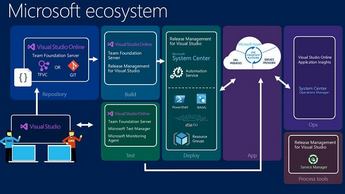






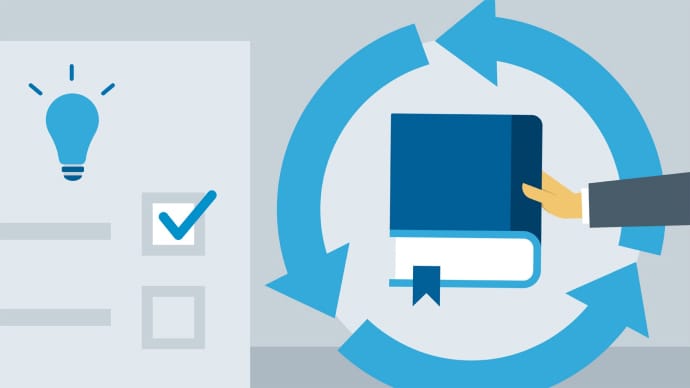
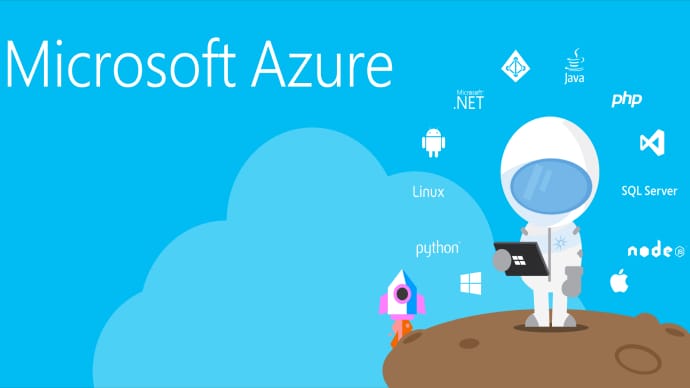


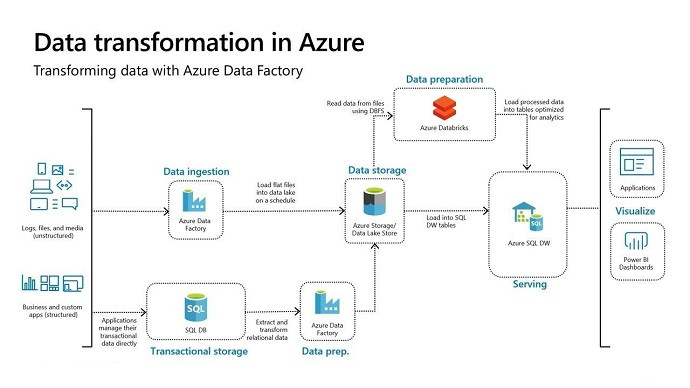









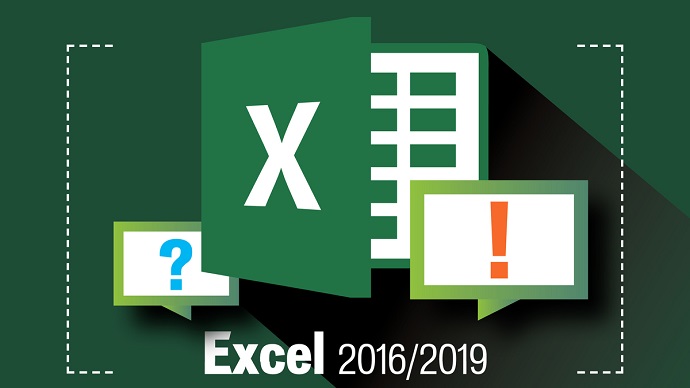





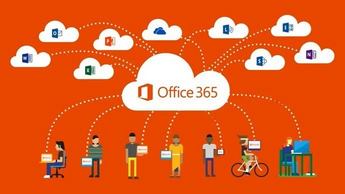
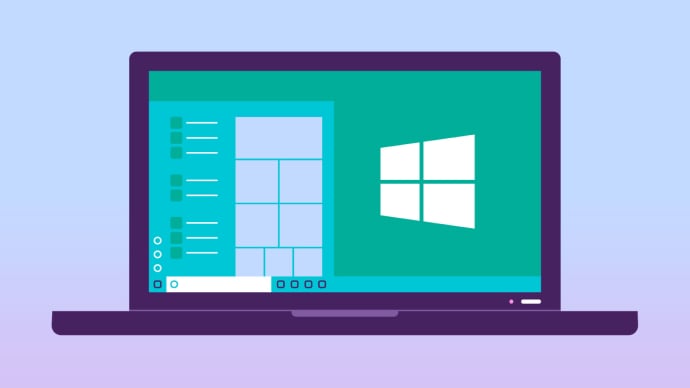









Only Registered Members can View Training Courses
Please fill out your email address below in order to view Training Courses. Registration is Free and Easy, You Simply need to provide an email address.
- Trusted by 1.2M IT Certification Candidates Every Month
- Hundreds Hours of Videos
- Instant download After Registration






